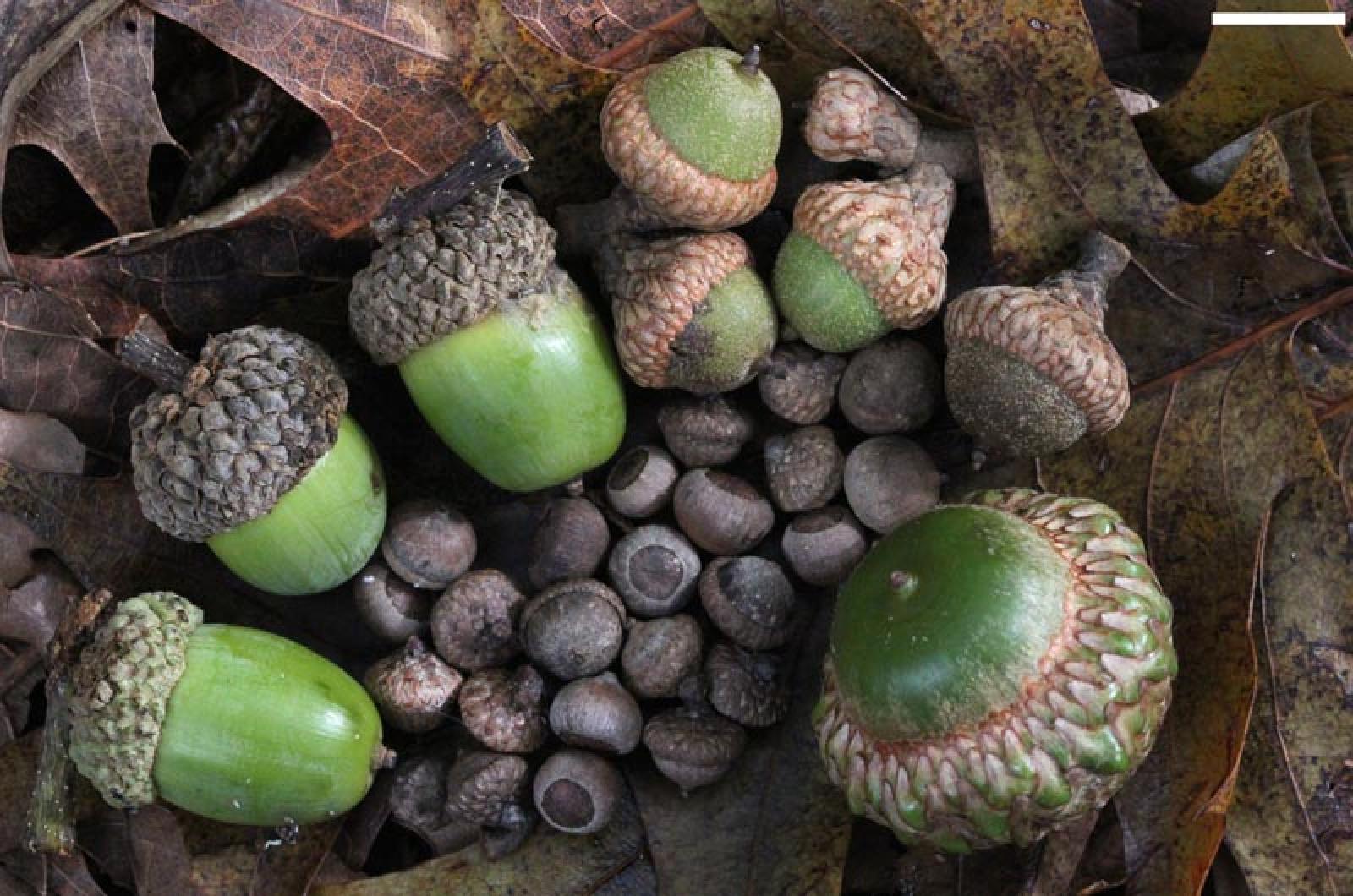Heads up!
The most necessary fall accessory this year is not the sweater. It is the hard hat.
It seems to be raining acorns. Strangely, it appears to me that the barrage is worse in West Tisbury than Edgartown this year, though that is more likely a function of type of tree rather than location.
In my Edgartown yard, there are black oak trees. Not only do these trees produce acorns every two years, but also they were the target of the cynipid wasp and many black oaks haven’t survived to produce any acorns. On my West Tisbury land, white oaks are more common. This variety is not threatened by the cynapid wasp and produces acorns annually.
No matter where you are, acorns, the nuts of oak trees, are dropping at a rapid rate.
It is, however, a myth that a boom of acorns will bring a colder than normal winter. Acorns are no better at predicting weather than we are. They are simply the result of a plant trying to sow its seed.
Some years do produce a heavier crop of acorns than others. These years are called mast years, though they are neither predictable nor easily explainable. A mast year is good for oak trees because it allows for ‘predator satiation.’ When it is ‘all you can eat,’ for acorn consumers, then they have their fill and there will be some acorns left that will be able to sprout and grow.
So what to do with all of those acorns? English philosopher and scientist Francis Bacon rightly observed “Acorns were good until bread was found.”
Acorns are more than just food for squirrels. Humans have a history of their consumption and with good reason. Acorns are easy to find, nutritious, don’t have gluten and are free. John Muir called them the most “strength giving” food he ever ate. But maybe Aristotle suggested the best reason to eat these nuts. He explained: “Erection is chiefly caused by parsnips, artichokes, turnips, asparagus, candied ginger, acorns bruised to a powder drunk in muscatel.”
Gentlemen, start your engines — with acorns.
Before you run out and collect your fill, note that acorns need some preparation before they are truly edible. They contain tannic acids that can be toxic and provide the bitter taste that you’ll experience if you try them right off the forest floor.
First, choose your acorns well. Those from the black oak group (scarlet, scrub and black oaks) tend to be bitterer than ones from the white oak group (white and post oaks). Green acorns are not yet ripe, so leave them behind. Also look at the cap. The bigger the cap, the harsher-tasting the acorn will be.
Second, give them the float test. Any acorns that float should be discarded, since they float due to the air in them, possibly caused by weevil grubs. You don’t need that particular extra protein.
Dry the acorns in an oven or pan to shrink the nuts so that you can remove the caps. The next job is getting rid of those pesky tannins. This can be done in a variety of ways. You can bury the acorns, squirrel-like, and retrieve them in a year. More commonly, folks boil them in multiple water baths, though this can sometimes bind the tannins and the bitterness can remain. Another option is to grind the acorns and flush them or soak until the water runs clear.
If you are successful in your preparation of the nutritious nuggets, there are many ways to use them. Ground and roast to make a coffee substitute of sorts. Blanch them and use them in recipes instead of chickpeas, peanuts or macadamia nuts. Sprinkle roasted acorn bits on salads or even add to stews where beans or potatoes are called for.
Though intrigued, I have yet to try any of these dishes. Eating acorns is on my bucket list, but will have to wait for another mast year since my efforts are currently going to building my house and larder, rather than filling it. Until then, I will just have to duck and cover to avoid the falling barrage of all of this free and fabulous food.
If you have the time and the inclination to taste the fruit of the oaks, one could only suggest that you go nuts!
Suzan Bellincampi is director of the Felix Neck Wildlife Sanctuary in Edgartown, and author of Martha’s Vineyard: A Field Guide to Island Nature.







Comments (1)
Comments
Comment policy »